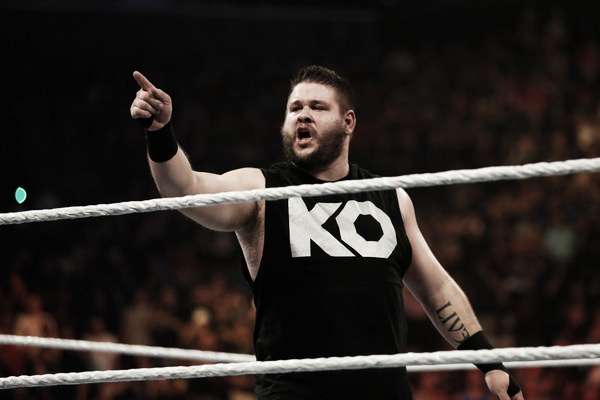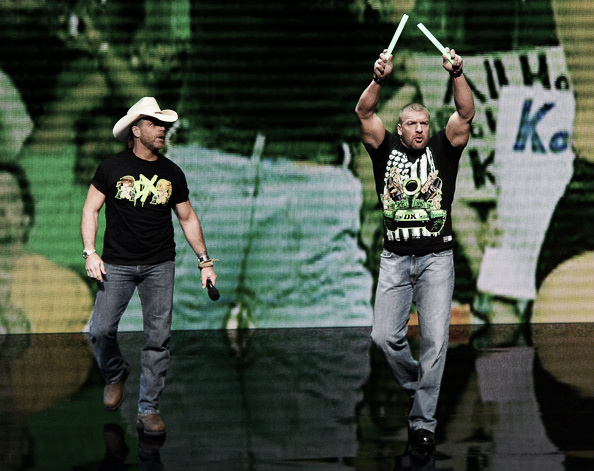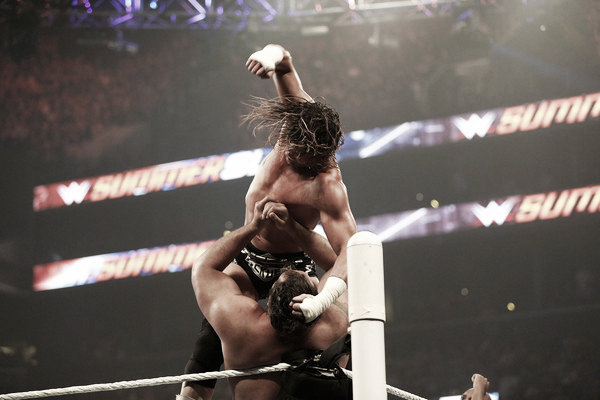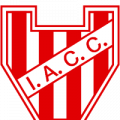“Make a decision and stick to it.”
This idea is not one associated with World Wrestling Entertainment. Over the years, they've gone back and forth (and back again) when choosing their target audience, deciding whether their ladies will fight in a “Divas” division or a “Women's” division, and deciding whether they want to have one brand or two.
For anyone unsure what is meant by “one brand or two,” a bit of a history lesson.
In 2001, the WWE purchased their primary competitors, World Championship Wrestling (WCW) and Extreme Championship Wrestling (ECW.) One of the resulting issues the WWE had to deal with was the new influx of wrestling talent; some wrestlers from ECW and WCW had their contracts bought out and did not join the WWE at that time, but there were many that did agree to new deals with the WWE. So in 2002, the WWE, which at the time featured two programs dedicated to new in-ring content, decided to split those two programs into two separate “brands.” Essentially each brand, Raw, and SmackDown, would have their own unique rosters and their own unique products. Each show would have something different to present.
Except for the World Champion. He'd be on both shows. For a while.
Then each show would have their own champion. Until they changed their mind about that and had one champion for each show again.
In 2011, the split ended. The WWE decided that having two brands was disruptive to the “flow” between television and the world. As a result, the Raw and SmackDown rosters were merged, and the WWE simply had one big roster and two main television programs.
However, if you ask fans like myself, we will tell you that they gave up on the brand split because the WWE wanted to end the farce that Raw and SmackDown were truly separate. With the number of times that wrestlers would crash the opposing program and attack a rival, not to mention the number of times that each program would talk about what happened on the other brand's show, ruined the illusion that these were indeed two separate groups. If you only watched Raw, it wasn't hard at all to keep up on what the SmackDown wrestlers were up to.
The WWE has announced that they will split their product into two brands once again, and the fan response has been mixed. There are many fans who are excited to see more talent showcased on a weekly basis. There are many fans like myself who are skeptical they'll do the split properly and will end up doubling back on this decision within the next 10 years.
But, there are some things the WWE can do to make this brand split work. Here are my thoughts on how the WWE can make this extension work.

Don't oversaturate the audience
This is the first of two, unquestionable, undebatable points.
Back in 1996, this writer sat in the crowd at the MECCA in Milwaukee, Wisconsin at a WWE (then known as the World Wrestling Federation) event called “King of the Ring” watching a wrestler called “Marvelous” Marc Mero, and people around me were chanting “John-ny, John-ny.” This writer could also hear a person seated not far away from me asking their friend “Why are they calling him 'Johnny?'”
The reason: Marc Mero used to wrestle in World Championship Wrestling and was known there as Johnny B. Badd.
My point? This writer was 11-years-old, had virtually no access to the internet, and even then knew why Marc Mero was being called “Johnny.”
Here in 2016, the average 11-year-old has a phone with internet access and can look this junk up within 30 seconds. But many fans wouldn't even need to do that. Further proof? Look up this link of AJ Styles debut in the WWE and note the pop from the crowd when the word “Phenomenal” is revealed on the Titantron. If you were not aware, Styles has been known for some time as “The Phenomenal One.” He'd never been in the WWE before and there is no way all those people would've known who he was unless they knew something about the previous promotions he'd been in, such as Total Nonstop Action (TNA,) Ring of Honor (ROH,) and/or New Japan Pro Wrestling.
The WWE seems to know, but not want to acknowledge, that their fans know about other companies. Many of us knew WCW and ECW existed back then in 1996. The fans know there are other promotions out there now in 2016; the fact that the WWE doesn't promote Ring of Honor or Total Nonstop Action or even New Japan Pro Wrestling doesn't mean that they don't exist. Many of us know they exist, and what's more, we know exactly what is going on each week on their respective TV programs.
WWE does not need to promote their product. The fans know it's there. It's like McDonalds or Walmart. Heck, it's just short of being a public utility.
We know when Raw is aired and we usually know when SmackDown is on (granted, they have moved that show around a few times.) That's not to say they can't or shouldn't promote their products as a general rule, however, this writer firmly believes that they don't need to give us a “rewind” (or “recap”, to be more generic) segment to tell us what happened on the opposing program last week. We know you have two products, guys.
And as a lesser point, if you want us to believe that Raw and SmackDown are rivals, having them each promote the opponent with a “rewind” segment is just dumb. Don't have them promote each other.
Keep the Rosters Separate!
The second of the unquestionable, undebatable points.
One of my biggest issues with the previous split was the amount of crossing over that the two rosters did. Previously within a couple of months, someone from SmackDown was jumping someone on Raw. Naturally, on the next SmackDown, the jumper became the jumpee. Raw GM, Eric Bischoff showed up on SmackDown, SmackDown GM, Stephanie McMahon showed up on Raw.
We would also be generously informed of what happened on the rival program if we'd missed it because you know, rivalry. We can't convince you our program is better unless we give you the highlights of the other program apparently.
To put it in baseball terms, say you had a major league team like the New York Yankees, then somehow their minor league affiliate became a major league team, but the Yankees could still call players up from their affiliate any time they wanted.
They're separate, but they're not separate if you follow me.
The last time Raw and SmackDown split, it never felt like two rival programs; it was two rival factions. It wasn't so much a repeat of WWE vs. WCW circa 1999 as it was WWE - the Alliance in 2001. It sucked! Mostly.
I grant you, there was SOME good stuff that came from those crossovers (Billy and Chuck's wedding ruined by Eric Bischoff being particularly noteworthy.) For the most part, though, it just screamed of something that bothers me A LOT.
Lazy writing.
Now, believe it or not, this author knows a thing or two about lazy writing (I know, it's shocking!) but this bothers the heck out of me when they're trying to sell me on “separate” products.
Surprise appearances by wrestlers are one of the simplest ways to get wrestling fans talking on social media, and fans love to see them. Let's go back to the AJ Styles debut; we knew it was coming eventually, but we didn't know when. Seeing ECW-castaways the Dudley Boyz pop up on SmackDown in 1999 got me pretty excited too. There are many examples over the years of wrestlers debuting in the WWE seemingly out of nowhere.
But these are examples of wrestlers leaving another promotion and staying with the new one. Styles left New Japan, the Dudley Boyz left ECW. They weren't popping up and going back to their previous promotion to talk about the great stunt they pulled in the WWE.
Now if they had done that, it might've worked because New Japan and ECW were separate from the WWE. It actually would have been surprising if their new rivals had followed them to the rival promotion to exact revenge.
The Raw/SmackDown crossovers can work now and again, but it ceases to be special when we see it all the time. If they keep the two brands completely separate, maybe they can recreate the feel of a Styles or Dudley Boyz appearance.
The WWE will not be able to completely recreate the feel of someone jumping to one of their shows from a completely separate group like Ring of Honor or New Japan, but they can come close enough to make it worth keeping the brands separate.

That rant out of the way, there are perfectly good reasons to have Raw and SmackDown talent interact. At Survivor Series, a 4-on-4 or 5-on-5 match between the two seems reasonable. A well-placed champion vs. champion match at WrestleMania could be great for business. Maybe the WWE could learn that “less is more,” that we don't need to see both parties to promote a match. The Raw guys can talk themselves up on Raw, the SmackDown guys can talk...well, smack, on SmackDown, and at the event, the match could actually have a special feel.
Imagine if you will, a WWE vs. WCW Pay Per View (PPV) event back in late 1997. DeGeneration X aggressively talks up their match against the New World Order (nWo) on Monday Night Raw. Meanwhile, the NWO postures and berates DX on Monday Nitro.
DX claims that the nWo isn't really anti-authority and that DX is the one who sets the bar on that.
The nWo claims that DX are just young, whiny punks who wouldn't know a good movement if they were sitting on a toilet seat with a box of Ex-Lax.
Then on Sunday night, DeGeneration X comes to the ring, Shawn Michaels, Triple H, the New Age Outlaws. The transmission goes white and black, and the nWo struts to the ring, Randy Savage, Scott Hall, Kevin Nash, led to the ring by Hollywood Hogan.
Are you ready? Do you have goosebumps right now? Then I have two words for you...
Point. Made.
They don't need to meet face-to-face until the PPV; plenty of drama can be built up by showing the audience that the PPV is the ONLY place they will be able to see these factions battle.
And if they must have a face-to-face encounter, why not make it a neutral conference table at the WWE offices like the Wrestlemania 6 Hulk Hogan/Ultimate Warrior contract signing? Give us a little old school flare to those promos.

Have Separate Champions
This plays into the “separate rosters” point made earlier, but nonetheless, a point that should be made given the historical precedence behind “separate brands.” Raw and SmackDown have had the joint champion and separate champions before. The National Wrestling Alliance has practiced a single world champion combined with territorial champions across their many promotions, with the single world champion touring to the various territories to make a special event when he came to town. They did, however, have a lot more than two promotions to with which to work.
In my opinion, the WWE has about a dozen guys they could throw the Heavyweight title on right now and they could expect a good run with that champion. 12 is a pretty good number of options. Realistically, a roster with a half-dozen or so “championable” wrestlers gives a product a good blend of potential directions.
For example, the WCW roster in 1998 had a solid group of guys that could carry the world title that included Goldberg, Hollywood Hogan, Kevin Nash, Scott Hall, The Giant, Sting, Lex Luger, Bret Hart, Randy Savage, and Diamond Dallas Page. Nine guys right there, before the pushes of Scott Steiner and Booker T. At some point, there was talk of WCW splitting Nitro and Thunder into two separate brands.
The WWE has Alberto Del Rio (he was a pretty solid champion for that year-plus he had the strap), Cesaro, Dean Ambrose, Seth Rollins, Dolph Ziggler, Roman Reigns, John Cena, AJ Styles, Kevin Owens, Randy Orton, Rusev, and Sheamus. 12 guys by my count. With one championship belt, this author can't see the WWE creative team giving the title to Owens, Styles, or Cesaro anytime soon, as much as a great number of fans would love to see it. With two championships, though, the fans can see these guys holding championship gold on their respective shows.

Introduce a New Tournament
Both Raw and SmackDown will have plenty of main event-level talent after the split, but as we've learned from WCW's mistakes, the WWE will need to continue building up new talent. And in fairness, they've done a decent job with some of the guys they've brought up from NXT. But why not introduce a new dimension to helping build talent?
A wise man once said “Imitation is the sincerest form of plagiarism,” and yes, I'm suggesting stealing an idea from another promotion.
This author suggests stealing a page out of NJPW's book, and that being a tweak of the “Best of the Super Juniors” tournament.
The Best of the Super Juniors is a tournament for junior heavyweight wrestlers from New Japan and around the world battling over the course of just a few weeks. The group of participating wrestlers are split into two blocks, Block A and Block B (their terminology, not mine.) Each wrestler faces the other wrestlers in their respective block one time, round robin style. A scoring system is used to determine who wins each block with a wrestler getting two points for a win, one point for a tie, and of course zero points for a loss. The first place finisher of each block faces one another for the title of “Best of Super Juniors,” a shot at the Junior Heavyweight title, not to mention a nifty trophy. You may be more familiar with this tournament than you realize if you've watched with the Ricochet vs. Will Osprey match that gained a great deal of attention in the last few months.
In the past, this tournament has featured the top two members of each block going to a single elimination tournament which was completed in one night.
My observations of this tournament: both in this tournament and in the heavyweight-version of it, the G1 Climax, the winners of each block actually lose matches in the round robin portion of the event. There is no “Super Cena wins every single match somehow” crap. The announcers (the American ones anyway, I can't vouch for the Japanese commentators) sell that these wrestlers get beat down over the course of a month. Every wrestler finds a way to win at least a match or two. Here's the bottom line of the way this tournament is constructed: every wrestler is given...respect.
Respect. How's that for a concept WWE?
As many of you are probably more familiar with some of the guys in the G1 Climax tournament, I'll use an example from that. In the 2015 tournament, the 10th (last) place finisher in Block A was Luke “Doc” Gallows. Even though he finished in last, he won three matches against his nine opponents, and one of those wins was against third place finisher Tetsuya Naito, who by the way, was in the midst of a push!
Another example: Even back in 1983, Hulk Hogan won the equivalent of the G1 Climax, and he didn't win all of his matches. And he was Hulk Freakin' Hogan!
So here's the idea... this would be a legitimate reason to have a Raw/SmackDown crossover at a PPV. Have both brands select from their own rosters eight wrestlers of varying levels, and let them fight in a round robin over the course of a month or two (best if they could pack this into a month and have tournament matches at house shows, but they could probably make this work by airing all the matches on TV over a two month stretch.) Take the top two finishers of each show and put them in a single elimination tournament at a PPV (how about King of the Ring? Perfect event for this.) Raw #1 seed faces the Smackdown #2 seed, Smackdown #1 faces the Raw #2, and winners face each other later in the show. A tournament like this can help build talent. It would be exciting to watch because we really wouldn't know when those upsets would occur. It could enhance talent from the mid-card level into a main event role and reinvigorate wrestlers who haven't been in serious title contention for a while, like a Dolph Ziggler or Alberto Del Rio.

Create a Separate Women's Show
This writer seriously thought about advocating for separating the Women's division between the two shows, but the argument against that idea is a valid one. The Women's roster is as deep as it has ever been, but splitting their roster would create a fairly shallow talent pool on both shows. That might not matter, as the women only get one, maybe two segments on a show as it is. One benefit of doing this: it would allow the WWE to work in new female talent fairly easily. Whether it be NXT talent like Bayley or Asuka, TNA talent looking to return to the WWE like Gail Kim or Maria Kanellis, or an off the grid signing like Cheerleader Melissa.
The main idea I'm hearing from other wrestling fans is to make the Women's division exclusive to one brand. This argument is inevitably followed by a statement like “You could put the Women's championship on one show and make the Tag Team titles exclusive to the other show.”
Name me one wrestling promotion that does not have Tag Team titles. Can't do it? It's because there isn't one! Why saddle a WWE product with that distinction?
Raw is 3 hours long. Way too long. It was too long when WCW Nitro did it, it's too long for Raw now. SmackDown will only be 2 hours, so Raw has an extra hour to fill, which doesn't seem fair on some level. Solution? Knock Raw down to 2 hours, give the Women a one hour show before Raw.
Giving them a show all to themselves lets the viewer get immersed in the Women's division for an hour and they won't get lost in the midst of all the men wrestling. And let's face it, there are some people who would enjoy watching a wrestling product that is just about the women and has nothing to do with over-muscular guys. If someone out there doesn't like the Women's division, they can skip that hour and tune in at 9pm Eastern for Monday Night Raw.
Another thought: this would give the WWE an excuse to put another hour of programming on before SmackDown. Sneak peeks of (usually) WWE Network exclusive programming, a weekly flashback program where they show some notable moments/matches from wrestling's history, whatever the WWE wants. Women's show followed by Raw on Mondays, Flashback show followed by SmackDown.
Perhaps you're arguing that a Women's show/Raw is still three hours of wrestling and that's not really so different from what they have now. I'd disagree, but they could take the one hour Women's show and put it on another night entirely. The idea is to simply give the ladies a chance to define their product separate from their male counterparts.
Admittedly, this begs the question of where the ladies would fall into the PPV schedule. They would certainly be included in the big four PPVs, the Royal Rumble, Wrestlemania, Summerslam, and the Survivor Series. They could, in time, have their own PPV. The WWE seems interested in choking out the competition with PPVs from Raw and Smackdown on a great many Sundays, possibly upwards of 20 next year.
In Closing...
These are just a few of the ideas that this author would propose to the WWE. As fans, we can only hope that they keep the product entertaining, listen to their fans, and get better at staying one step ahead of us in anticipating what we will want to see from them.








































